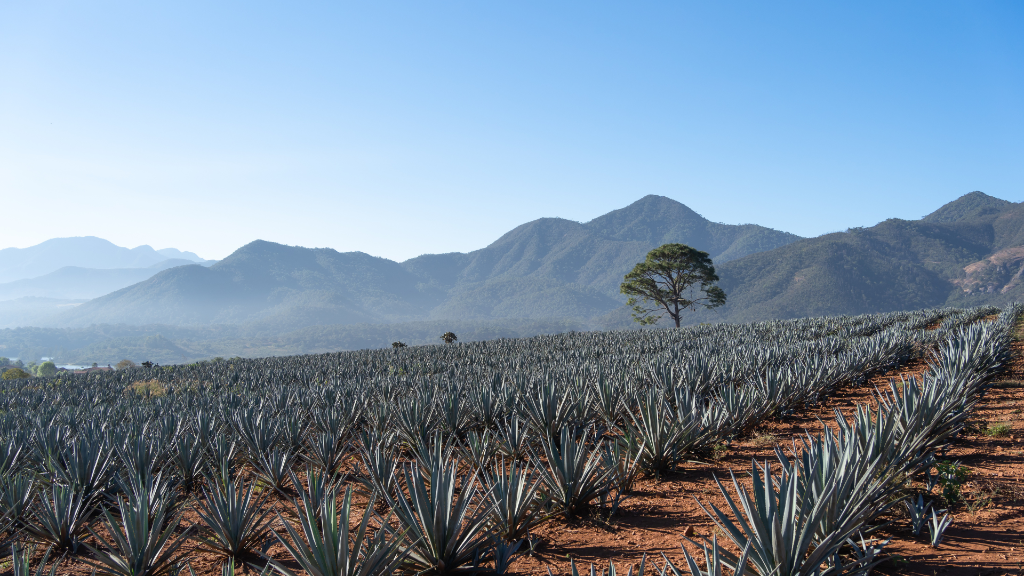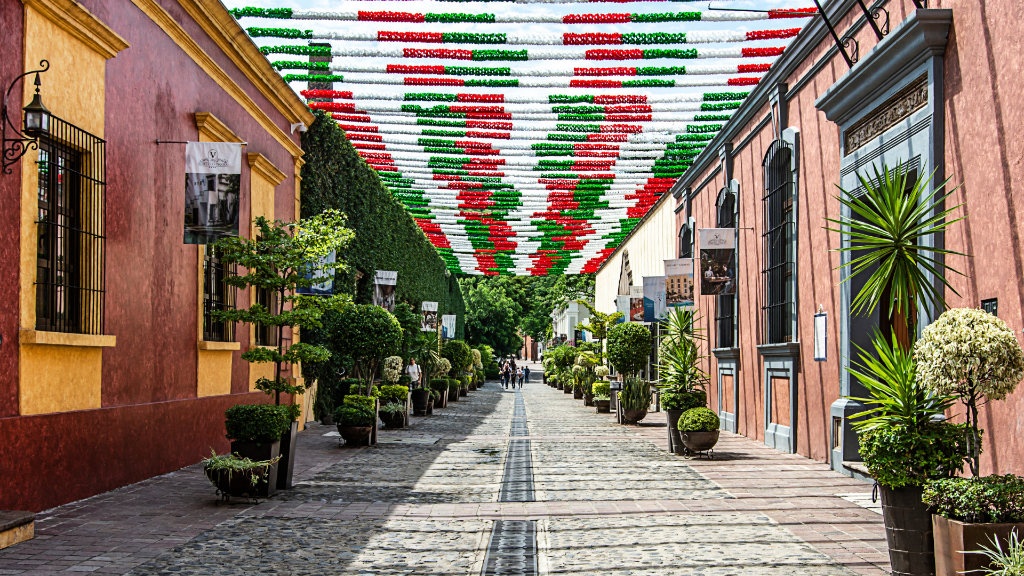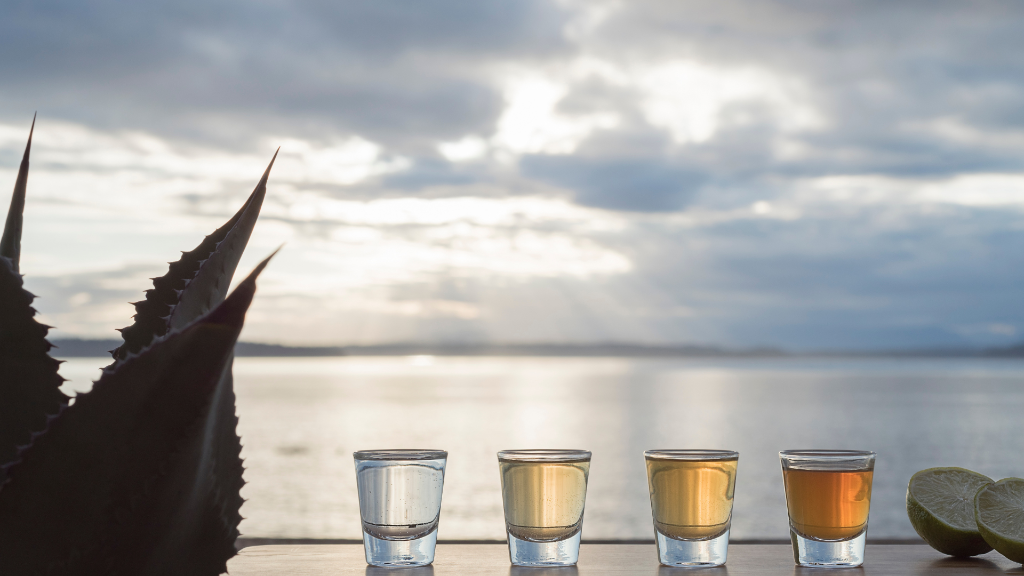Journey through Mexico's Iconic Spirit
 Journey through Mexico's Iconic Spirit
Journey through Mexico's Iconic Spirit
At Angry otter Liquor, we're not just about selling bottles; we're all about sharing knowledge and helping you find your perfect pour. So, grab a glass and let's get started on this tequila adventure together!
As we take you through the history of tequila, from the agave fields to the distilleries where the magic happens, we hope you gain a better understanding of the different types and how to taste them like a pro. But it's not just about the spirit—we'll also explore the culture and traditions that surround tequila, from festivals to sustainable production practices.
So, whether you're a seasoned sipper or a tequila newbie, get ready to raise a glass and toast to the spirit of adventure. Salud!

The Origin Story: Tequila's Roots Unearthed
Like many other spirits, tequila did not start out as the partygoer’s first choice. It actually did not resemble the smooth spirit we know today. Tequila's journey begins in the rugged terrain of Jalisco, Mexico, where the indigenous people, including the Aztecs and later the Tequila Indians, first discovered the magic of the agave plant. For these ancient civilizations, the agave was more than just a plant; it was a sacred entity revered for its multitude of uses. They harvested its leaves for shelter, wove its fibres into clothing and tools, and even fermented its sap into a beverage known as pulque, considered the nectar of the gods.
With the arrival of Spanish conquistadors in the 16th century, the agave plant caught their attention. They recognized its potential for distillation and began experimenting with fermenting its juices to create a potent alcoholic beverage, essentially creating what we know today as mezcal. This early incarnation of tequila was far rougher around the edges than the refined spirit we enjoy today, but it laid the groundwork for what was to come.
The town of Tequila, nestled in the heart of Jalisco's agave-rich landscape, became the epicentre of tequila production. Here, the indigenous knowledge of agave cultivation and fermentation merged with European distillation techniques brought by the Spanish colonizers. The result was a smoother, more palatable spirit that soon gained popularity not only in Mexico but also around the world.
Over the centuries, tequila production continued to evolve, spurred on by advancements in technology and changes in consumer tastes. In 1974, to claim ownership of the spirit, the Mexican government declared the term intellectual property. This designation, along with stringent regulations governing production methods, helped protect tequila's integrity and ensure its authenticity. This meant it could only be produced in certain regions of Mexico, primarily in Jalisco and parts of neighbouring states.
Today, the Consejo Regulador del Tequila (Tequila Regulatory Council) safeguards tequila's heritage. It oversees every aspect of production, from agave cultivation to bottling. To bear the label of "tequila," a spirit must be made from at least 51% blue agave and produced in accordance with strict quality standards, similar to Bourbon in Kentucky.
Types of Tequila: A Spectrum of Flavor and Character
Tequila is not a one-size-fits-all spirit; it comes in a diverse array of types, each offering its own distinct flavour profile and character. From crisp and clean blanco tequila to rich and complex extra añejo, there's a tequila to suit every palate and occasion. Let's explore the different types in more detail:
- Blanco (Silver) Tequila: The purest expression of the agave plant, bottled immediately after distillation without any aging. Known for its crisp, fresh flavour with vibrant agave notes and a subtle sweetness, Blanco is perfect for cocktails.
- Reposado Tequila: Meaning "rested" in Spanish, it' s aged in oak barrels for a minimum of two months and up to one year. During this brief aging period, reposado tequila takes on subtle flavours of oak, vanilla, and caramel while retaining the vibrant agave character of Blanco tequila. With its smooth and mellow profile, reposado is ideal for sipping or adding depth to cocktails like the Paloma or Tequila Old Fashioned.
- Añejo Tequila: Añejo, or "aged" tequila, is aged in oak barrels for a minimum of one year and up to three years. This extended aging imparts rich flavours of oak, spice, and dried fruit, creating a complex, velvety-smooth tequila. Añejo is best enjoyed neat or on the rocks, allowing its nuanced flavours to shine through.
- Extra Añejo Tequila: The pinnacle of aged tequila, aged in oak barrels for a minimum of three years. With its deep mahogany colour and luxurious flavours of dark chocolate, tobacco, and roasted nuts, extra añejo tequila is a true sipping spirit. Savoured slowly, preferably in a snifter, extra añejo tequila is an experience to be cherished and savoured.
- Specialty Tequilas: In addition to the traditional types of tequila, there are also specialty tequilas that push the boundaries of innovation.Flavored tequilas, infused with ingredients like fruit, herbs, or spices, offer a unique twist on classic tequila flavors. Organic tequilas, made from agave grown without synthetic pesticides or fertilizers, appeal to environmentally conscious consumers seeking a more sustainable option.
Whether you prefer the crisp brightness of blanco tequila, the smooth complexity of añejo, or something in between, there's a tequila out there waiting to be discovered. So, next time you're at Angry Otter, why not pick up a bottle of tequila and embark on your own flavour adventure?

Tequila Culture: A Celebration of Tradition and Innovation
Tequila is more than just a spirit; it's a cornerstone of Mexican culture. Throughout Mexico, tequila festivals and events abound, celebrating everything from the agave harvest to the art of tequila production. One of the most famous festivals is the Feria Nacional del Tequila in Jalisco, where locals and visitors alike come together to enjoy music, dance, and plenty of tequila tasting. Other notable events include the International Mariachi and Charro Festival in Guadalajara and the Day of the Dead celebrations, where tequila plays a central role in honouring departed loved ones.
Tequila's influence extends far beyond the bar; it has inspired artists, musicians, and writers for centuries. From Diego Rivera's iconic paintings to the soulful melodies of traditional mariachi music, tequila's cultural impact is evident in all forms of artistic expression. In literature, authors like Gabriel García Márquez and Laura Esquivel have immortalized tequila in their works, capturing its essence as a symbol of Mexican identity and pride.
In recent years, the tequila industry has placed a growing emphasis on sustainability and ethical practices, similar to the vodka industry. Many distilleries are implementing environmentally friendly initiatives, such as water conservation measures and waste recycling programs, to minimize their impact on the surrounding ecosystem. Additionally, there is a focus on supporting local communities and preserving traditional agave cultivation methods, ensuring that tequila production remains a source of pride and prosperity for generations to come.
So, the next time you pour yourself a glass of tequila, take a moment to appreciate the centuries of tradition and craftsmanship that have gone into every drop. From humble beginnings in the agave fields of Mexico to worldwide acclaim, tequila's origin story is as rich and complex as the spirit itself. The spirit and its various styles have captured the hearts and palates of enthusiasts around the world.
Whether you enjoy it neat, in a cocktail, or as part of a festive gathering, take a moment to toast to the spirit of exploration, discovery and camaraderie that tequila embodies. And remember, at Angry Otter Liquor, we’re always here to help with a curated selection and expert advice. Stop in your local store and ask the team for their recommendations!
